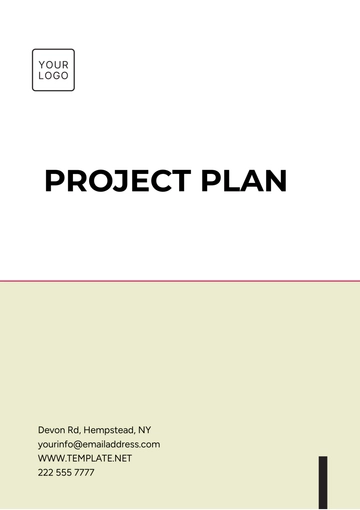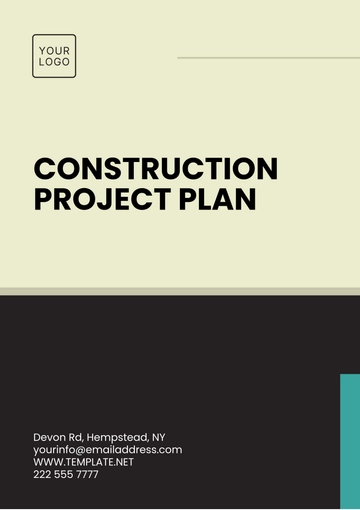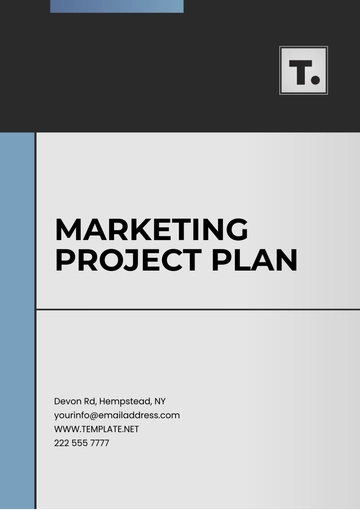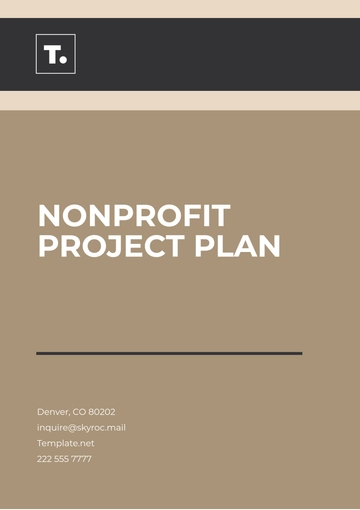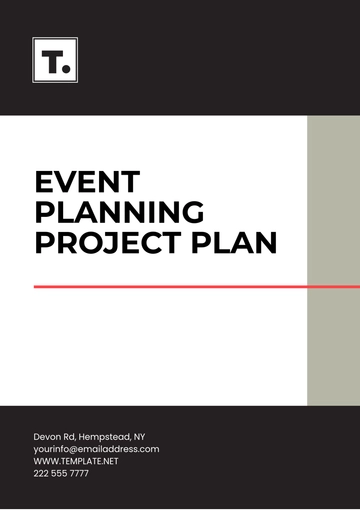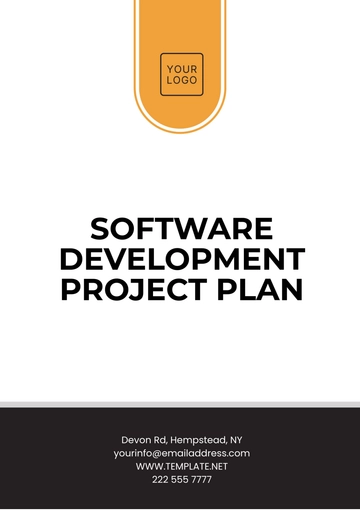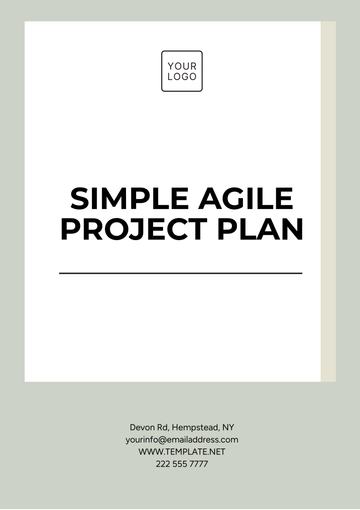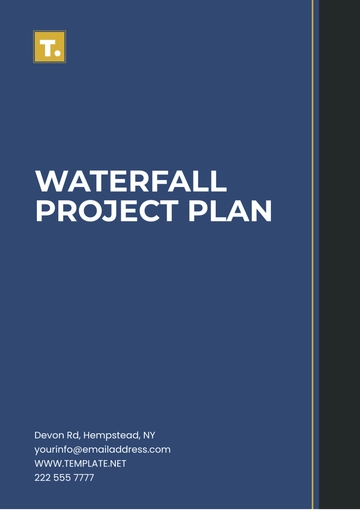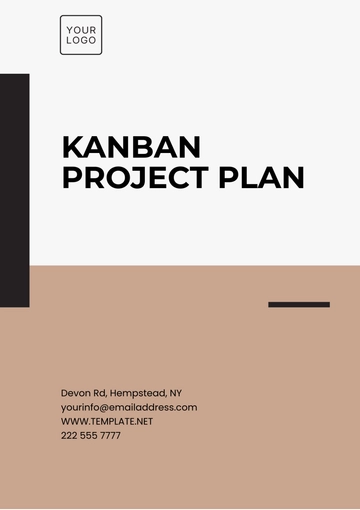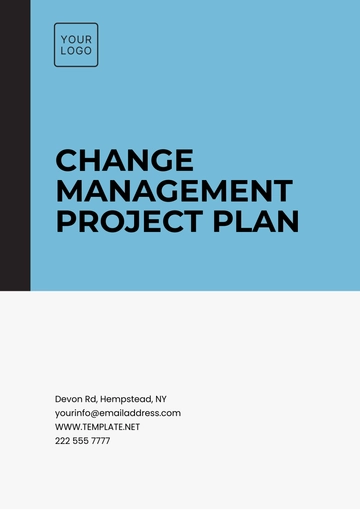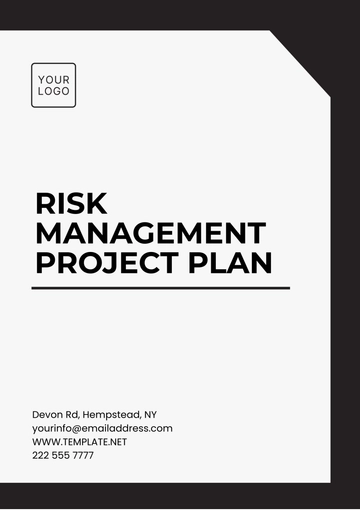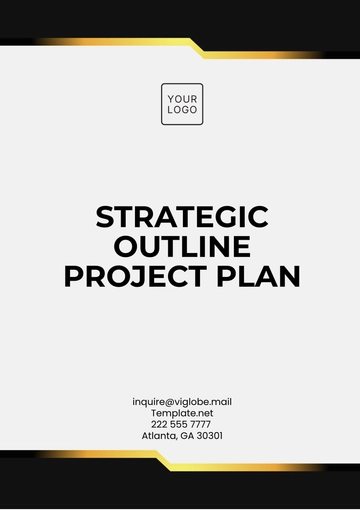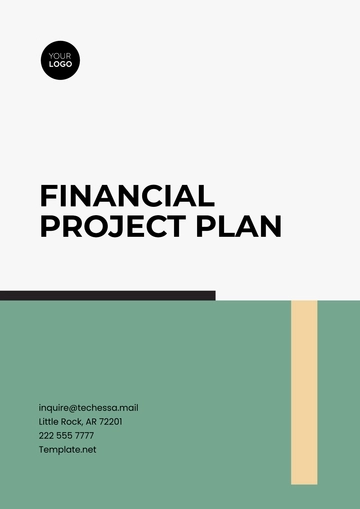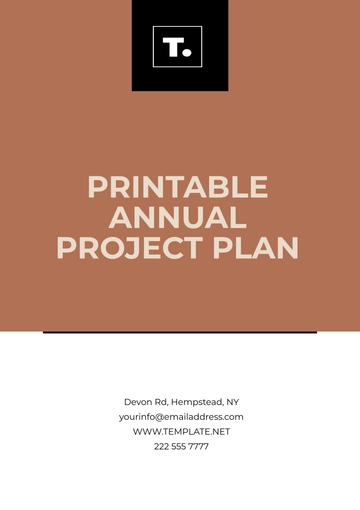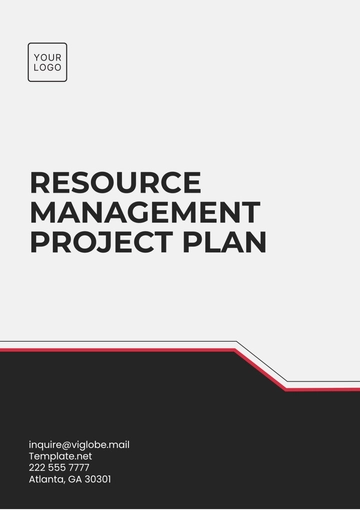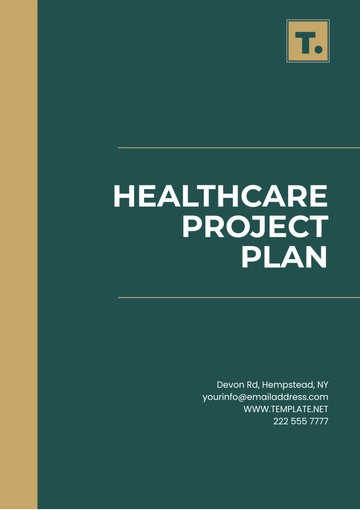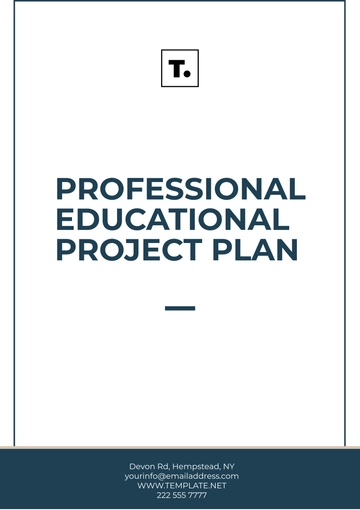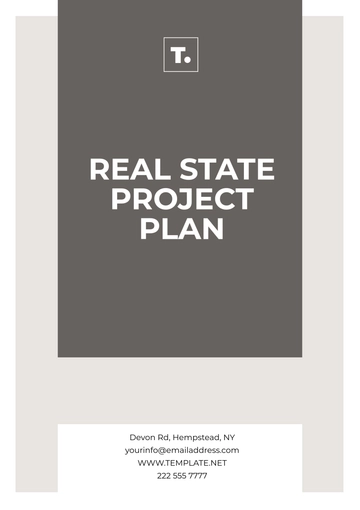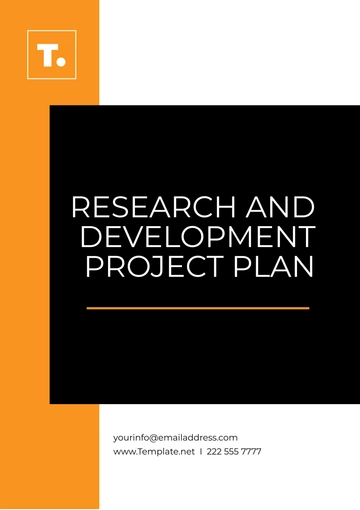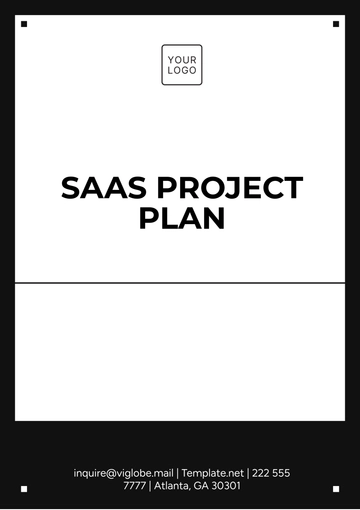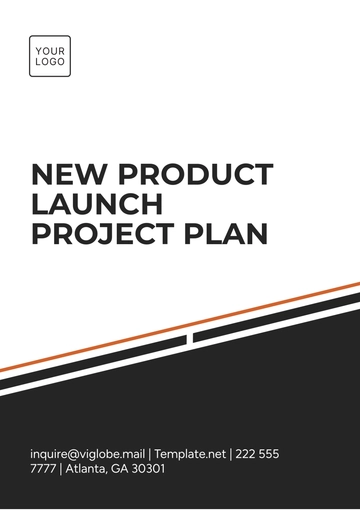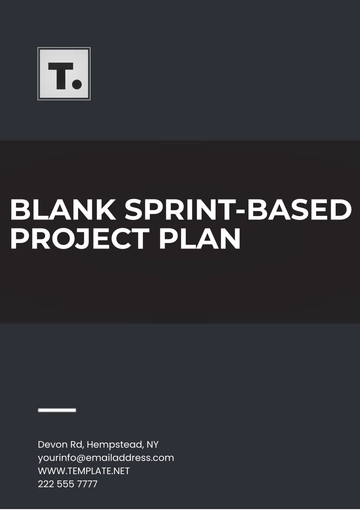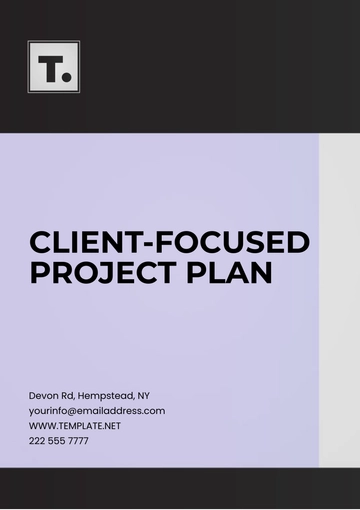Free Charity Project Plan

I. Executive Summary
A. Project Overview
The Charity Project Plan outlines the strategic framework for [Your Company Name]’s initiative aimed at addressing critical issues faced by the youth in low-income communities. The project is designed to provide educational resources and vocational training to empower at-risk youth, thereby contributing to their personal and professional development. This plan encompasses a detailed examination of the project’s objectives, activities, management structure, financial requirements, and evaluation metrics.
The initiative aims to combat high unemployment rates among youth, which currently stands at [25%] in certain urban areas, according to the Department of Labor Statistics. By equipping young people with essential skills, we intend to reduce this unemployment figure significantly and enhance their overall life prospects.
B. Objectives
The main objectives of this project include:
To enhance access to educational resources and vocational training for at least [500] youth within the next [two] years.
To empower [50%] of participants through tailored training programs designed to enhance employability.
To create sustainable community programs that foster long-term benefits and self-sufficiency among participants.
By achieving these objectives, [Your Company Name] aims to contribute significantly to the well-being of the youth in these communities and establish a model that can be replicated in other areas facing similar challenges.
C. Benefits
The anticipated benefits of this charity project include:
Improved quality of life for youth through increased educational attainment and job readiness.
Increased awareness of the importance of vocational training within the community, encouraging families to support their children’s education.
Establishment of a support network that encourages ongoing participation and engagement among community members, leading to lasting relationships and mentorship opportunities.
This multifaceted approach not only addresses immediate educational needs but also promotes long-term community empowerment.
II. Project Description
A. Background and Context
The need for this project arises from alarming statistics and trends related to youth unemployment and educational disparities. For instance, according to the National Youth Employment Coalition, over [40%] of young people in low-income neighborhoods drop out of high school, significantly limiting their job prospects.
Furthermore, those who do graduate often lack access to vocational training and career development resources. This project aims to address these gaps by implementing targeted interventions that focus on education and skill development.
Historical Context
Historically, the youth in these communities have faced systemic barriers that hinder their educational and employment opportunities. Factors such as economic instability, lack of access to quality education, and limited community support contribute to this ongoing cycle of disadvantage. By understanding this context, [Your Company Name] can tailor its approach to effectively meet the needs of this population.
B. Target Population
The primary beneficiaries of this project are youth aged 16-24 from low-income families in urban areas, specifically in [City]. This demographic is particularly vulnerable to economic downturns and often lacks access to the resources necessary for educational success.
Demographic Information
Demographic Factor | Description |
|---|---|
Age Range | 16-24 years old |
Economic Status | Low-income families |
Geographic Area | Urban, [City] |
Key Challenges | Unemployment, Dropout rates, Limited access to resources |
This project will prioritize those who face the highest barriers to education and employment, ensuring that resources are directed where they are needed most.
C. Project Activities
The project will consist of various activities designed to achieve the outlined objectives. These activities will include:
Needs Assessment: Conducting surveys and interviews with local youth to better understand their specific needs, barriers, and aspirations. This assessment will help us tailor our program offerings effectively.
Resource Allocation: Identifying and securing necessary resources, including personnel, materials, and funding, to support the planned activities. This may include partnerships with local businesses for job placements and training facilities.
Training Workshops: Organizing a series of workshops that will cover various topics, including resume writing, interview techniques, and specific vocational skills such as coding, culinary arts, and carpentry. Each workshop will be designed to meet the varying skill levels of participants.
Mentorship Program: Establishing a mentorship program that pairs participants with professionals in their fields of interest. Mentors will provide guidance, encouragement, and networking opportunities that can significantly enhance job readiness.
Community Engagement: Hosting community events to raise awareness of the project and its benefits. These events will also serve as platforms for youth to showcase their skills and achievements.
Each activity will be meticulously planned to ensure alignment with the overall project goals. The execution of these activities will also involve local stakeholders to foster a sense of community ownership.
III. Project Goals and Objectives
A. Long-term Goals
The long-term goals of the charity project are to:
Achieve measurable improvements in educational attainment and employment rates for youth in the targeted areas within five years. This will be monitored through follow-up surveys and collaboration with local employers.
Establish sustainable programs that continue to provide support beyond the project duration. This includes the potential for developing a community center dedicated to ongoing vocational training and career resources.
Create a model for similar initiatives in other regions, ensuring that best practices and lessons learned can be replicated to benefit more communities.
B. Short-term Objectives
To support these long-term goals, the project will focus on several short-term objectives, including:
Objective 1: Engage at least [500] community members within the first six months through outreach efforts, including social media campaigns, community meetings, and collaborations with local schools.
Objective 2: Facilitate [12] training sessions on various vocational topics in the first year, aiming for an average attendance rate of [75%] among participants.
Objective 3: Develop partnerships with at least [10] local organizations to enhance resource availability, including potential job placement opportunities and internship programs.
Objective 4: Assess participants’ progress through pre-and post-training evaluations to measure skill acquisition and confidence levels, aiming for a [20%] increase in self-reported job readiness.
IV. Project Management
A. Governance Structure
The project will be governed by a robust management team, ensuring accountability and effective decision-making throughout the project lifecycle. The governance structure will consist of the following key components:
Advisory Board: Composed of community leaders, educational professionals, and business representatives, the advisory board will provide strategic direction and oversight.
Project Management Team: This team will be responsible for the daily operations and implementation of project activities. Regular meetings will ensure effective communication and alignment with project objectives.
Governance Chart
Role | Responsibilities |
|---|---|
Project Director | Overall project oversight and strategic direction; responsible for stakeholder engagement and reporting to the advisory board. |
Program Manager | Daily management of project activities, including coordination with trainers, mentors, and community partners. |
Financial Officer | Budget management, financial reporting, and fundraising efforts to secure project sustainability. |
Community Liaison | Engagement with the target population and stakeholders; responsible for community outreach and event organization. |
Monitoring and Evaluation Officer | Tracking project performance, conducting evaluations, and reporting findings to stakeholders. |
B. Roles and Responsibilities
Defining clear roles and responsibilities is crucial for the success of the project. The key roles include:
Project Director: Oversees all aspects of the project and ensures alignment with strategic goals. This role will involve engaging with key stakeholders, including funders and community organizations.
Program Manager: Manages project activities, coordinates between teams, and reports progress to stakeholders. This includes logistical planning for training sessions and workshops.
Financial Officer: Responsible for budget management and financial reporting. The financial officer will ensure that all expenditures align with the project budget and will seek out additional funding opportunities.
Community Liaison: Works directly with the target population to encourage participation and gather feedback on project activities. This role will be crucial in building trust and relationships within the community.
Monitoring and Evaluation Officer: Responsible for tracking project performance and ensuring that objectives are met. This role will involve developing evaluation frameworks and analyzing data collected from participants.
C. Project Timeline
A detailed timeline will be established to guide project activities. Below is a proposed timeline for key milestones:
Milestone | Month (2050) | Description |
|---|---|---|
Project Launch | February | Kick-off meeting with stakeholders and community members. |
Needs Assessment Completion | March | Finalize assessment reports and identify key areas of need. |
First Training Session | April | Launch the first vocational training workshop. |
Mid-project Review | May | Evaluate progress and adjust plans as necessary. |
Community Engagement Event | June | Host an event to showcase participants’ skills. |
Final Evaluation Report | July | Compile findings and recommendations for future initiatives. |
This timeline will serve as a framework to ensure that all activities are executed in a timely manner and that progress is continually monitored.
V. Budget and Financial Planning
A. Budget Overview
The estimated budget for the charity project is outlined below. Each line item reflects the anticipated costs associated with executing project activities effectively.
Budget Item | Estimated Cost ($) |
|---|---|
Personnel Costs | 150,000 |
Training Materials | 25,000 |
Venue Rentals | 10,000 |
Marketing and Outreach | 15,000 |
Evaluation and Monitoring | 5,000 |
Miscellaneous Expenses | 5,000 |
Total Budget | 210,000 |
This budget will be refined as the project progresses, and efforts will be made to secure additional funding to support ongoing initiatives.
B. Funding Sources
To achieve financial sustainability, [Your Company Name] will explore various funding sources:
Grants: We will apply for grants from foundations and government programs focused on youth development and education. Examples include the Bill & Melinda Gates Foundation and local government initiatives.
Corporate Sponsorship: Partnering with local businesses to secure financial contributions or in-kind donations, such as training materials and venue space.
Fundraising Events: Organizing community events, such as charity runs and auctions, to raise awareness and funds for the project. These events can serve dual purposes: fundraising and community engagement.
Individual Donations: Developing a donor program to encourage contributions from individuals passionate about youth development. Regular communications highlighting project impact will help maintain donor engagement.
C. Financial Projections
Financial projections will be crucial for long-term planning. Below are projected financial outcomes for the first year of the project:
Projection Item | Year 1 ($) |
|---|---|
Total Income | [250,000] |
Total Expenses | [210,000] |
Surplus/Deficit | [40,000] |
These projections indicate a positive financial outlook, allowing for reinvestment in the project and future expansion efforts.
VI. Monitoring and Evaluation
A. Performance Indicators
To assess the effectiveness of the project, [Your Company Name] will establish clear performance indicators. These will help track progress and inform decision-making throughout the project lifecycle. Key performance indicators (KPIs) include:
Participant Enrollment: Tracking the number of youth engaged in the program, with a target of [500] enrollments in the first year.
Skill Acquisition: Measuring the percentage of participants who demonstrate improved skills post-training, aiming for a [70%] success rate.
Employment Outcomes: Assessing the employment status of participants six months after completing the program, with a goal of achieving a [50%] employment rate.
Participant Satisfaction: Collecting feedback through surveys to gauge satisfaction levels and areas for improvement. A target satisfaction rate of [80%] is anticipated.
B. Evaluation Methods
The evaluation process will involve a mix of qualitative and quantitative methods:
Surveys: Administering pre-and post-training surveys to assess participant knowledge and skills before and after program involvement.
Interviews: Conducting interviews with participants and mentors to gather in-depth feedback on experiences and outcomes.
Focus Groups: Organizing focus groups with stakeholders to discuss project impact and gather suggestions for improvement.
Data Analysis: Analyzing collected data to measure progress against the established KPIs, ensuring transparency and accountability throughout the project.
C. Reporting
Regular reporting will be essential for maintaining stakeholder engagement and demonstrating accountability. Reports will include:
Quarterly Progress Reports: Summarizing project activities, achievements, and any challenges faced, distributed to stakeholders and funders.
Annual Impact Report: A comprehensive report detailing overall project outcomes, including success stories, financial summaries, and plans for the following year.
Feedback Mechanisms: Establishing channels for ongoing feedback from participants and stakeholders to continuously improve project delivery.
VII. Risk Management
A. Risk Identification
Understanding potential risks is crucial for effective project management. Key risks identified for this charity project include:
Funding Shortfalls: Inadequate funding may limit the scope of activities, hindering project effectiveness.
Low Participant Engagement: Difficulty in attracting participants may impact program delivery and outcomes.
Operational Challenges: Logistical issues related to venue availability or resource allocation may disrupt planned activities.
B. Risk Assessment
Each identified risk will be assessed based on its likelihood and potential impact on the project. A risk matrix will be developed to visualize this assessment.
Risk | Likelihood | Impact | Mitigation Strategy |
|---|---|---|---|
Funding Shortfalls | Medium | High | Diversify funding sources and develop a robust fundraising strategy. |
Low Participant Engagement | High | Medium | Implement targeted outreach strategies, including social media campaigns and partnerships with local organizations. |
Operational Challenges | Medium | High | Develop contingency plans for logistics, including alternative venues and flexible scheduling. |
C. Risk Mitigation Strategies
To address the identified risks, [Your Company Name] will implement the following strategies:
Funding Diversification: Actively pursue a variety of funding sources to mitigate the risk of shortfalls. This includes applying for grants, securing corporate sponsorships, and organizing fundraising events.
Community Outreach: Increase efforts to engage the community and potential participants through targeted marketing campaigns and partnerships with local schools and organizations.
Contingency Planning: Develop contingency plans for logistical challenges, including identifying alternative venues or adjusting program delivery methods to ensure continuity of services.
By proactively identifying and addressing risks, [Your Company Name] aims to enhance the resilience and effectiveness of the project.
VIII. Sustainability Plan
A. Long-term Sustainability
To ensure the project's sustainability, [Your Company Name] will adopt the following strategies:
Establish Partnerships: Collaborate with local organizations, businesses, and educational institutions to create a network that supports ongoing program offerings. These partnerships will provide resources, expertise, and a platform for continuous community engagement.
Resource Sharing Network: Develop a resource-sharing network that allows community organizations to share materials, venues, and training resources, optimizing capabilities and reducing costs.
Continuous Fundraising: Engage in ongoing fundraising efforts, including grant applications, fundraising events, and donor cultivation. Maintaining a consistent fundraising strategy will help support program sustainability.
B. Community Involvement
Community involvement will be critical to the project's success and sustainability. Strategies to foster community engagement include:
Local Volunteer Engagement: Encourage community members to take active roles in program delivery and management, fostering a sense of ownership and commitment to the initiative.
Training for Community Leaders: Provide training for community members to become leaders and advocates for the initiative, empowering them to lead discussions and facilitate programs within their neighborhoods.
Participant Decision-making: Involve participants in decision-making processes, ensuring that programs remain relevant and effective. Regular feedback sessions will allow participants to share their ideas and experiences, fostering a collaborative environment.
C. Future Funding Strategies
To secure future funding, the project will implement several strategies:
Long-term Fundraising Strategy: Develop a comprehensive fundraising strategy, including regular donor communications and updates on project impact. This will help cultivate relationships with donors and keep them informed about the project's progress.
Identify Additional Grants: Continuously identify and apply for additional grants that align with the project’s mission. This proactive approach will ensure that funding opportunities are maximized.
Leverage Success Stories: Use success stories and testimonials to attract corporate sponsorship and partnerships. Highlighting the impact of the project will make a compelling case for support from businesses looking to invest in community initiatives.
IX. Conclusion
The Charity Project Plan outlines a comprehensive approach to addressing the critical needs of the youth in low-income communities through a range of targeted activities and interventions. With clearly defined objectives, a robust management structure, and a focus on sustainability, [Your Company Name] is poised to make a significant impact on the community.
Through this initiative, we aim not only to provide immediate support but also to create a foundation for long-term success and resilience. By investing in the well-being of our youth, we are fostering a generation that can thrive economically and socially.
This project is more than a one-time intervention; it is a commitment to ongoing community empowerment and development. By prioritizing collaboration, transparency, and community involvement, we aim to build a lasting legacy that empowers individuals and enriches lives for years to come.
Together, we can create a future where every young person has the opportunity to succeed, contribute, and lead within their communities. [Your Company Name] is committed to this vision and looks forward to working alongside stakeholders to bring this project to fruition.
- 100% Customizable, free editor
- Access 1 Million+ Templates, photo’s & graphics
- Download or share as a template
- Click and replace photos, graphics, text, backgrounds
- Resize, crop, AI write & more
- Access advanced editor
Manage your initiatives with the Charity Project Plan Template from Template.net. This editable and customizable template allows you to outline project objectives, timelines, and resources needed. Use our Ai Editor Tool to personalize it, ensuring clear direction and accountability for your charity projects.
